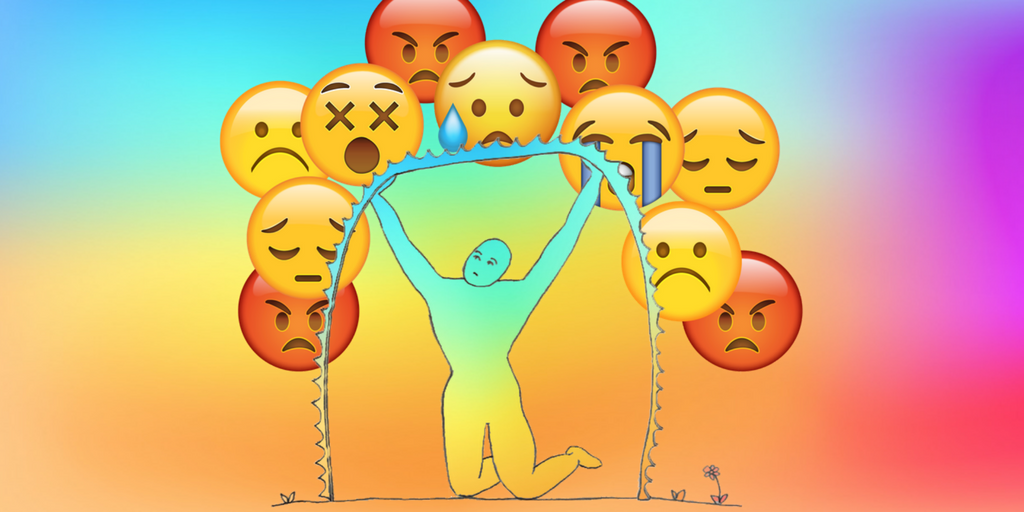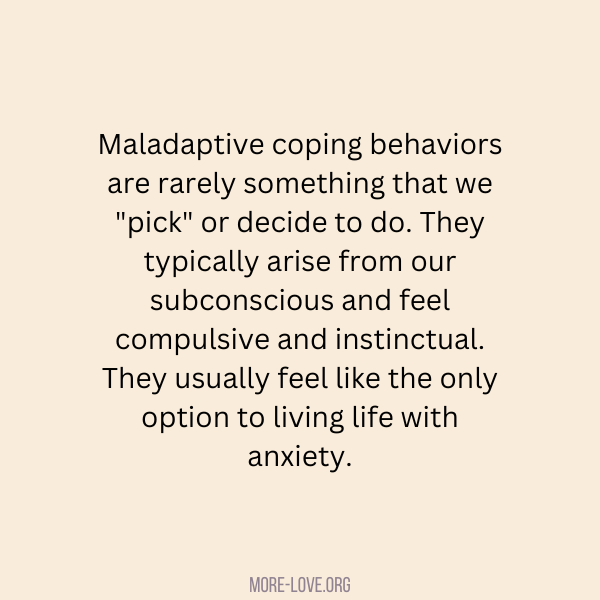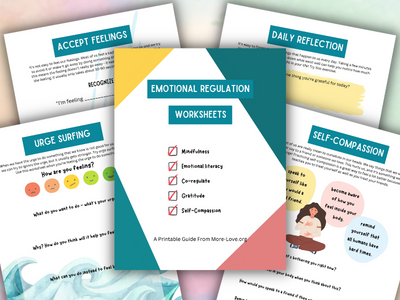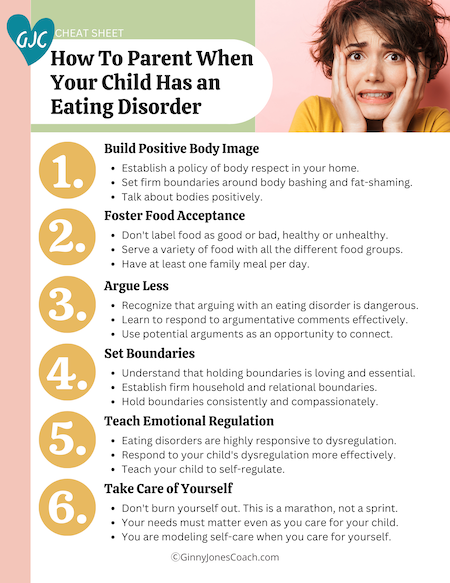
A maladaptive coping behavior is a behavior that we utilize to soothe ourselves when we feel anxious. Mildly avoidant coping behaviors may look like frequently avoiding using the elevator because you feel a bit anxious in elevators and stairs are easily accessible.
But sometimes coping behaviors can overwhelm our ability to live a “normal” life. For example, a fear of elevators may mean refusing to ever ride in an elevator, spending excessive energy and time researching stair access in buildings, using the stairs even when it adds significant hardship, and refusing to go places that don’t have reasonable stair access (e.g. an office on Floor 10 or above). At this point, when a coping behavior interferes with normal life, it may be called “maladaptive.”
It’s important to note that maladaptive coping behaviors start out as a good solution to an emotional problem. But when they interfere with life they become disordered. Nobody is “bad” for having a maladaptive coping behavior. But we do have ways of treating maladaptive coping behaviors, also known as disordered behaviors. This is what recovery is. Even them most deeply-entrenched maladaptive coping behaviors can be overcome, but it takes tremendous effort and support. The most-recognized method for recovering from maladaptive coping behaviors is to build emotional regulation skills and healthy coping strategies.
Emotional Regulation Worksheets
Give these printable worksheets to grow more confident, calm and resilient and feel better, fast!
- Self-Esteem
- Self-Regulation
- Mindfulness
- Calming strategies
Maladaptive coping behaviors are a response to anxiety
Maladaptive coping behaviors usually start small, such as avoiding the elevator when it’s convenient. But they can also grow over time and take over our lives. This is because the problem is rooted in anxiety. Anxiety impacts us both psychologically and physically. Some symptoms of anxiety include:
- Racing thoughts
- Uncontrollable fear
- Rage
- Asking the same question over and over again
- Wanting to run away
- Extreme chest pain
- Crying or screaming
- Jittering or shaking
- Nausea or heartburn
- Fainting or physically shutting down
Obviously, when we feel these awful symptoms of anxiety, we want them to stop. We need them to go away! So we reach for coping behaviors to feel better. Coping mechanisms can be mild or severe. They typically make us feel better temporarily, but increase anxiety and maladaptive coping in the long run.
Maladaptive coping behaviors help in the short term but hurt in the long term. They may have physical, emotional, and social side effects that are even worse than the anxiety itself. They also tend to make anxiety get worse over time. Healthy coping behaviors will help in the short- and long-term, and they reduce anxiety over time.
Free Download: How To Parent A Child With An Eating Disorder
The 6 basic steps you need to follow to help your child recover from an eating disorder.
Common maladaptive coping behaviors include:
Anxiety disorders are common, and thus maladaptive coping behaviors are also fairly common. Some maladaptive coping behaviors include:
- Eating disorders
- Shoplifting/Kleptomania
- Overspending/Shopping addiction
- Promiscuous sex/Sex addiction
- Substance abuse/Alcohol abuse
- Self-harm
- Compulsive lying
It is very common for a person to develop more than one maladaptive coping behavior or mechanism. Another thing that often happens is we will overcome one maladaptive coping behavior only to replace it with a different one. For example, someone who had an eating disorder may develop a substance abuse problem.
What’s the reason for maladaptive coping behaviors?
At their core, maladaptive coping behaviors like eating disorders are attempting to help us. They seem like a great idea because they immediately seem to solve a distressing emotional state.
Here are some examples of people using maladaptive coping behaviors:
- Jane feels stressed and unloved when she visits with family. After family events, phone calls, and even emails she shops compulsively and has racked up thousands of dollars in credit card debt.
- Michael divorced his partner and feels lonely. Every night he comes home to an empty house and eats bags of potato chips and cartons of ice cream, then gets a stomachache and feels ashamed of himself for having no control.
- Sarah suffered sexual trauma as a child and now has PTSD. Several nights each week she finds herself at bars picking up on strangers and sleeping with them. She wishes she wouldn’t do this, and doesn’t understand why it keeps happening.
- Jamal’s parents were both incarcerated and used substances heavily. He always swore that he wouldn’t get mixed up in that and became a successful lawyer with a family. But he has fallen into the habit of drinking a bottle of wine every night, sometimes more.
Maladaptive coping behaviors are rarely something that we “pick” or decide to do. They typically arise from our subconscious and feel compulsive and instinctual. They usually feel like the only option to living life with anxiety.

When a behavior becomes maladaptive
Most people can relate to at least one of the coping behaviors we listed. That’s because everyone uses coping behaviors, and they aren’t always maladaptive. For example, most people have used shopping, alcohol, food, and other maladaptive coping behaviors occasionally to cope with stress.
It’s important to recognize the difference between using something occasionally and feeling better and using something compulsively. A person who is stuck in a maladaptive coping behavior may notice that they feel:
- Compelled to use the behavior even if they don’t want to
- Ashamed of themselves for using the behavior
- Notice that they need the behavior more often and/or need a higher dose over time
These three elements can signal that someone is becoming dependent on a maladaptive coping behavior.
Emotional Regulation Worksheets
Give these printable worksheets to grow more confident, calm and resilient and feel better, fast!
- Self-Esteem
- Self-Regulation
- Mindfulness
- Calming strategies
How can we stop maladaptive coping behaviors?
The most important thing to recognize when dealing with maladaptive coping mechanisms is that they are there to help. While they may look obviously destructive to other people, the person who is using them feels soothed and better when using the behavior.
This is why saying that someone needs to stop the maladaptive coping behavior “cold turkey” can backfire. Unless we replace the maladaptive coping behavior with healthy coping behaviors, we can cause more harm than good.
If we want a child or someone we love to stop using maladaptive coping behaviors like eating disorders, we need to help them uncover the stress they are trying to cope with. Then we need to help them build healthy coping behaviors so they can replace one with the other.
If we try to rip the maladaptive coping behavior away without recognizing the purpose the behavior is serving, we risk driving it underground or morphing into another form because we have not actually addressed the core problem.
Healthy coping behaviors include:
- Self-compassion
- Mindful meditation
- Exercise or movement
- Pursuing passions, hobbies, and crafts
- Processing feelings mindfully, not automatically
- Actively seeking care and attention from loved ones
- Developing some distraction “tricks” to get through an anxious state, such as making a list of fruits and vegetables, naming all of the car manufacturers, or seeking a specific color in the environment.
- Reaching out to a friend or family member for help
- Getting professional therapy, counseling, or coaching
- Participating in and feeling as if you belong to a community
We created this short video to illustrate maladaptive coping mechanisms.
How we feel feelings
When we are in a normal state, various feelings circulate in and out of our minds rapidly. However, when we have depression or anxiety, our feelings begin to get stuck in our orbit. Then, negative feelings become larger, while positive feelings become smaller.
At this point, some of us engage maladaptive coping mechanisms in an attempt to protect ourselves from these negative emotions. Unfortunately, when we use these coping mechanisms, we minimize and keep out positive emotions even more than before.
Feeling better in the short-term
Maladaptive coping mechanisms are behaviors that make us feel better in the short term, but in the long-term, they are very harmful. They are part of the psychology of eating disorders, self-harm, alcohol & substance abuse, sexual promiscuity, shoplifting, risk-taking behavior and compulsive lying.
Once we become dependent on our maladaptive coping mechanisms, we become emotionally weaker, and even less able to withstand negative emotions. But our maladaptive coping mechanisms convince us that they are the solution to our pain.
Even as our maladaptive coping mechanisms bring us to our knees, we are unable to see how they are perpetuating the pain we are trying to avoid.
Free Download: How To Parent A Child With An Eating Disorder
The 6 basic steps you need to follow to help your child recover from an eating disorder.
Adaptive coping mechanisms
Adaptive, or healthy coping mechanisms, are skills that we must learn in order to overcome our maladaptive coping mechanisms. If we try to stop our maladaptive behavior without learning healthy skills, we are unlikely to succeed. Healthy coping skills include learning to process emotions, learning to care for ourselves, and being assertive about our needs.
As we slowly learn these skills, we gain strength against the maladaptive coping behavior, slowly integrating our new tools for managing negative emotions. As we do this, positive feelings become more present in our lives. Over time, our feelings begin to circulate again. Even as this happens, and even as we begin to feel positive emotions again, we must be vigilant about practicing our healthy skills to ensure we can make a full transition and become truly recovered.
Recovery from maladaptive coping behaviors
People can and do recover from maladaptive coping behaviors like eating disorders. The key is to learn to “urge surf” or allow the urge to arise but respond with adaptive coping mechanisms.
Recovery means that we can live in the world and experience a broad variety of positive and negative emotions. We no longer need to rely on our maladaptive coping behavior to feel safe and secure.

Ginny Jones is the founder of More-Love.org, and a Parent Coach who helps parents who have kids with disordered eating and eating disorders. Combining science, compassion, and experience coaching hundreds of families, she helps parents understand what’s going on with their kids’ eating behaviors and teaches them the science-backed skills to heal kids’ relationship with food, improve their body image, and feel better about themselves, their relationships, and life in general.
Ginny has been researching and writing about eating disorders since 2016. She incorporates the principles of neurobiology and attachment parenting with a non-diet, Health At Every Size® approach to health and recovery.


